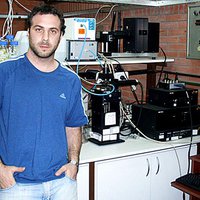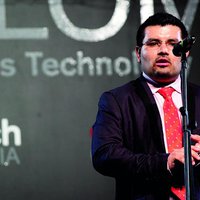Biotechnology & medicine
Weian Zhao
Spying on cells in their native habitat to develop better tests and drugs
Illustration by Weian Zhao

Latin America
Marcelo Martí
New approach in the search for effective TB treatment

Europe
Thibaut Mercey
Fast detection of pathogenic bacteria in food to prevent infections

Global
Bryan Laulicht
Finding an adhesive that protects vulnerable skin

Latin America
Álvaro Rojas-Peña
He has developed an extracorporeal organs conservation system for transplants that keeps organs alive during 36 hours
